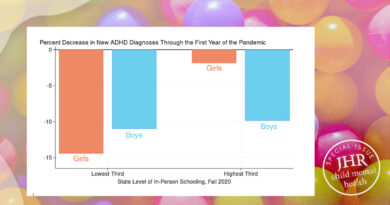Prescription Opioids and Labor Market Pains
In the United States, the opioid epidemic has had dramatic adverse effects—in 2017 alone there were over 45,000 overdose deaths related to opioids. While much of the focus on the opioid epidemic has centered around how opioid use affects users’ health, their families, and communities, little is known about how the rise in opioid prescriptions has impacted regional labor market outcomes.
In response to this research gap, Matthew Harris, Lawrence Kessler, Matthew Murray, and Beth Glenn collected county-level prescriptions data from ten U.S. states and were the first to examine the effects of prescription opioids on county labor market outcomes. Their findings point to large, negative consequences for regional labor markets.
The researchers compared counties with a large number of high volume opioid prescribers to those with very few heavy prescribers. They found that, on average, a 10 percent increase in per capita opioid prescriptions caused a 0.53 percentage point drop in the labor force participation rate and a marginally significant 0.1 percentage point increase in the county unemployment rate. Finding stronger adverse effects in labor force participation suggests that prescription opioid use is primarily driving people to exit the labor force entirely.
In addition, they find that the adverse labor market effects of opioids are strongest in counties with healthier labor markets. Media reports often associate heavy opioid use with the more economically distressed counties, but these findings suggest that the opioid-related damage may have already occurred in the areas with low labor force participation. Thus, while individuals may be using more opioids in depressed economies, some of these individuals may have already left the labor force.
While opioids may have therapeutic value for some, these findings suggest broad social costs that should be considered when evaluating policy interventions to combat the opioid crisis in America. According to the authors, “Finding that prescription opioids are subtracting individuals from the labor market means that the opioid epidemic is affecting economic growth, the tax bases of local economies, and the amount of resources available for households to invest in the next generation.”
Read the full study in the Journal of Human Resources: “Prescription Opioids and Labor Market Pains: The Effect of Schedule II Opioids on Labor Force Participation and Unemployment,” by Matthew C. Harris, Lawrence M. Kessler, Matthew N. Murray, and Beth Glenn.
***
Matthew C. Harris (@BigOrangeEcon) is Associate Professor, Boyd Center for Business and Economic Research and Department of Economics, University of Tennessee. Lawrence M. Kessler is Research Associate Professor, Boyd Center for Business and Economic Research and Department of Economics, University of Tennessee. Matthew N. Murray is Professor, Boyd Center for Business and Economic Research and Department of Economics, University of Tennessee University of Tennessee. Beth Glenn is Postdoctoral Fellow, Education Research Alliance, Tulane University.




